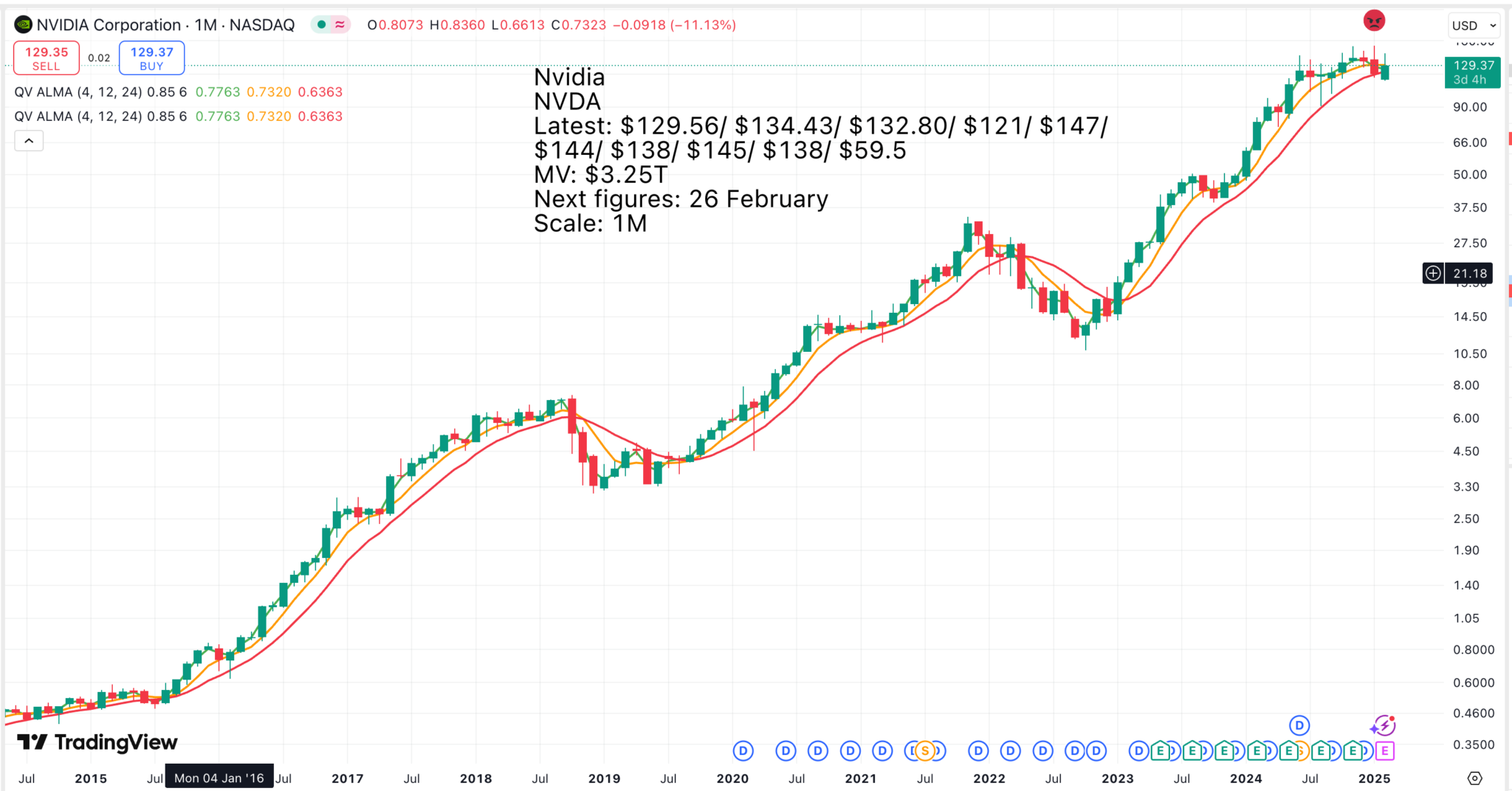








Strategy – Charts Are Flashing Amber
As a friend of mine once said in an advertising campaign, the advantage of charts is that ‘charts don’t lie.’ They tell you things you may not want to hear. I have been positive in recent alerts and that is coming back to bite me. Many important charts are showing signs of rolling over.
Because I operate on such extreme leverage I can act like the canary in the mine. At the first sign of problems, my account starts flashing red and I have learned from experience to close all positions. I am 100 per cent liquid.
This may be one of those moments when we should all do the same. Even spectacular results from Nvidia failed to boost the shares more than momentarily and many of the moving averages are showing signs of bunching with the shortest green moving average turning down.
A simple argument is that bunching can be the prelude to a buy signal, so as a safety-first strategy, sell and wait for that signal. Worst case the bunching can come ahead of the moving averages, all turning down and a significant bear phase.
A scary thought has struck me. The megacaps are spending huge sums on data centres for AI. Even if AI is going to change the world, the return on this investment may be disappointing. I found the following comments on the 19th century railway boom.
Chapter 4 examines the bubble in railway shares which occurred in the UK in the mid-1840s. Railway share prices more than doubled between 1843 and the autumn of 1845. In addition, there was a promotion boom with hundreds of new railways being authorised by Parliament. By the autumn of 1845, 562 new railway schemes had been submitted to Parliament. Following several major newspaper editorials regarding this folly, the bubble came to an end. The chapter then moves on to discuss the causes of the bubble. The incorporation of hundreds of railway companies by Parliament resulted in an increase in marketability. In terms of money and credit, interest rates were at an historical low and part-paid shares leveraged the buying of shares. The railway bubble witnessed the democratisation of speculation, with many middle-class individuals buying shares for the first time. The spark which set the bubble fire alight was the Railway Act. This Act signalled that railways had the potential to be very remunerative investments. It also created the Railway Board, which was a means of coordinating applications to build railways so that a national rail network was constructed. The chapter concludes by examining the consequences of the bubble, arguing that the bubble was a deeply inefficient way to create a national rail network, and much too wasteful to be considered useful.
Boom and Bust, William Quinn and John. D Turner, 6 August 2020
Could there be parallels between the AI boom and the railway mania? Railways changed the world dramatically, but they were disastrous for investors. Too much excitement can paradoxically be bad for share prices.
Bitcoin is also flashing alarms, perhaps suggesting a period of tight money lies ahead. Trump’s presidency is taking the world in directions which may be unexpected in their consequences.
I don’t have a crystal ball but the charts are making me cautious.



